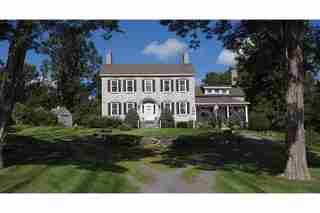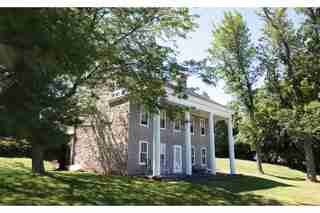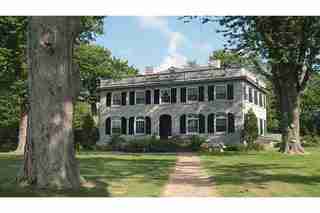
dam-images-books-2015-stone-houses-stone-house-book-01.jpg
Jefferson County, New York, has one of the nation's largest concentrations of stone structures. A new book,* Stone Houses of Jefferson County *(Syracuse University Press, $50), explores their history and construction.
The Henry Brown Mansion in Brownville has “1830” engraved on one of the chimneys, but the perfectly symmetrical limestone structure could have been built as early as 1815.

dam-images-books-2015-stone-houses-stone-house-book-02.jpg
The Georgian-style James Horton House in Lyme was named for its owner, the first permanent settler on Point Salubrious. Completed in 1819, the home was deserted by 1880 and then renovated with a third-floor addition in the 1890s.

dam-images-books-2015-stone-houses-stone-house-book-03.jpg
The Stone House, also known as the Vincent LeRay House, in Cape Vincent was built with limestone quarried on nearby Carleton Island. The 1815 structure features a wood balustrade, the only one remaining on a stone house in the county.
dam-images-books-2015-stone-houses-stone-house-book-04.jpg
Built by Austin Rogers in 1838, the one-and-a-half-story Rogers Homestead in Cape Vincent includes a wood addition from 1841. The residence remained in the family for more than 90 years.
dam-images-books-2015-stone-houses-stone-house-book-05.jpg
With a steeply pitched roof and dentil trim, Angel House in Clayton is better built and of a different style than most of the limestone homes in Jefferson County. The rough-coursed limestone residence was probably constructed on speculation around 1853.
dam-images-books-2015-stone-houses-stone-house-book-06.jpg
The Federal-style Elijah Horr House in Orleans was built for a successful farmer in 1835. The interior still has the original floor plan, and three of the four fireplaces remain intact.
dam-images-books-2015-stone-houses-stone-house-book-07.jpg
The 1827 Felt Mansion in Rutland mixes a few styles, including a Georgian form, a Federal entrance, and a Greek Revival interior.
dam-images-books-2015-stone-houses-stone-house-book-08.jpg
The Oliver Bates House, built around 1820 of evenly coursed limestone, has walls that are about two feet thick. There’s a keystone arch over the front doorway.
dam-images-books-2015-stone-houses-stone-house-book-09.jpg
Completed in 1815, the General Jacob Brown Mansion consists of 22 rooms on eight acres. The home was briefly used as the military headquarters of the Northern Division of the Federal Army, and Presidents Monroe, Madison, and John Quincy Adams were guests there. It now houses the village of Brownville’s offices, a library, and a community center.
dam-images-books-2015-stone-houses-stone-house-book-10.jpg
Ryder House—built in 1820 by Joseph Ryder, an early settler—sits on bedrock and has an attached wood ell. There is one working fireplace on the first floor and two on the second.
dam-images-books-2015-stone-houses-stone-house-book-11.jpg
The one-and-a-half-story Ira Hinsdale House was built into a hillside in 1820, overlooking land that Hinsdale cleared as a pasture for Merino sheep. The home’s current owners raise cattle.
dam-images-books-2015-stone-houses-stone-house-book-12.jpg
The almost square, 10-room Copeland House in Antwerp is said to have been constructed of stone hauled by a team of oxen from the nearby Render quarry in 1816.
